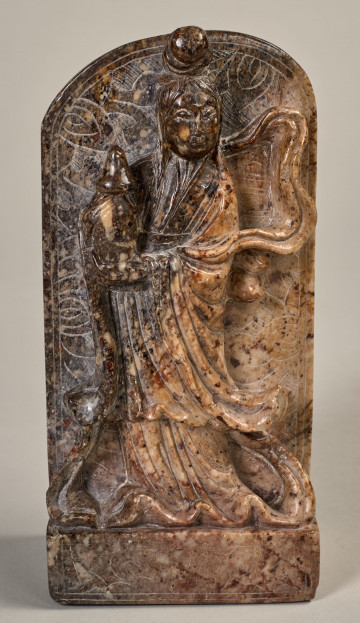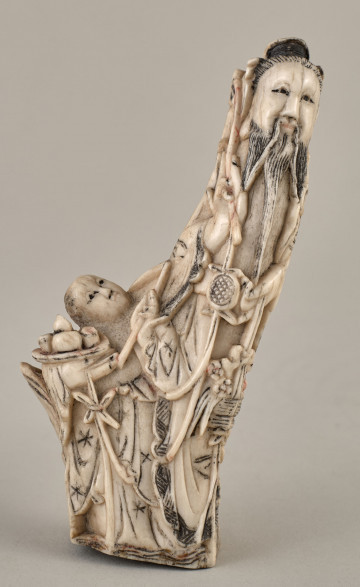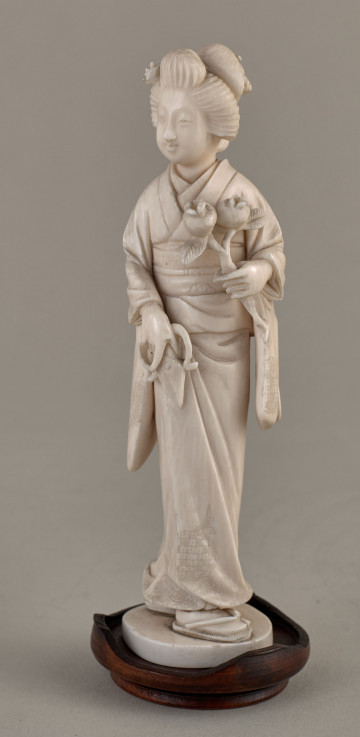
Stele
17th-18th (?) century
Castle Museum in Łańcut
Part of the collection: Orient
Stele - probably votive - in the shape of a standing rectangle finished in a semicircle, made of agalmatolite (a stone from the Chinese talc group) of uneven, spotty color in the range of brown, grey and beige. On the front plane there is a figure of a standing woman holding a vase with a lid with both hands - the elixir of immortality - carved in strongly convex relief. Her hair is combed into a high bun above her forehead. She is wearing a two-piece robe covering her entire body, feet and hands. Around the shoulders there is a sash falling to the ground - an attribute of supernatural beings. In the vase, two peach fruits can be seen, symbolizing immortality. The vase contains the "elixir of immortality" indicating the attribution of the figure - a fairy belonging to the court of the goddess Xi Wangmu. The background of the stele is covered with an stylized peony flowers ornament and flower scrolls, at the top in the back there is an additional engraved drapery with bamboo leaves motif . The stele is shown in two copies (S.11799 M³ and S.11800 M³) - the right and left mirror image of the figure. China, Ming dynasty or later, 17th/18th century.
Author / creator
Dimensions
height: 18.7 cm, width: 9 cm
Object type
Orient
Technique
bas relief
Material
agalmatolite
Creation time / dating
Creation / finding place
Owner
Castle Museum in Łańcut
Identification number
Location / status

17th-18th (?) century
Castle Museum in Łańcut

18th century
Castle Museum in Łańcut

1st half of the 20th century
Castle Museum in Łańcut
DISCOVER this TOPIC
Museum of King Jan III's Palace at Wilanów
DISCOVER this PATH
Educational path